-
 Bitcoin
Bitcoin $107,341.7259
0.15% -
 Ethereum
Ethereum $2,438.6204
0.70% -
 Tether USDt
Tether USDt $1.0003
-0.02% -
 XRP
XRP $2.1866
1.94% -
 BNB
BNB $649.0952
0.36% -
 Solana
Solana $150.9602
5.63% -
 USDC
USDC $0.9999
0.00% -
 TRON
TRON $0.2742
0.40% -
 Dogecoin
Dogecoin $0.1645
1.93% -
 Cardano
Cardano $0.5669
1.18% -
 Hyperliquid
Hyperliquid $37.8286
4.19% -
 Bitcoin Cash
Bitcoin Cash $491.4669
-2.74% -
 Sui
Sui $2.8150
3.06% -
 Chainlink
Chainlink $13.4184
2.91% -
 UNUS SED LEO
UNUS SED LEO $9.0809
0.27% -
 Avalanche
Avalanche $18.0295
2.60% -
 Stellar
Stellar $0.2396
1.19% -
 Toncoin
Toncoin $2.8587
0.13% -
 Shiba Inu
Shiba Inu $0.0...01160
2.59% -
 Litecoin
Litecoin $86.4192
1.45% -
 Hedera
Hedera $0.1486
1.19% -
 Monero
Monero $308.4324
0.87% -
 Polkadot
Polkadot $3.4202
1.43% -
 Bitget Token
Bitget Token $4.6436
-0.34% -
 Dai
Dai $0.9998
-0.02% -
 Ethena USDe
Ethena USDe $1.0002
0.00% -
 Uniswap
Uniswap $7.1527
3.29% -
 Pi
Pi $0.5357
-8.45% -
 Pepe
Pepe $0.0...09588
4.61% -
 Aave
Aave $259.9759
0.81%
What is Stability Fee?
Decentralized finance (DeFi) uses stability fees to maintain stablecoin pegs, charging fees when prices deviate from the target (usually $1). These fees incentivize users to restore price stability, but their implementation and impact vary widely across protocols.
Mar 11, 2025 at 08:55 am
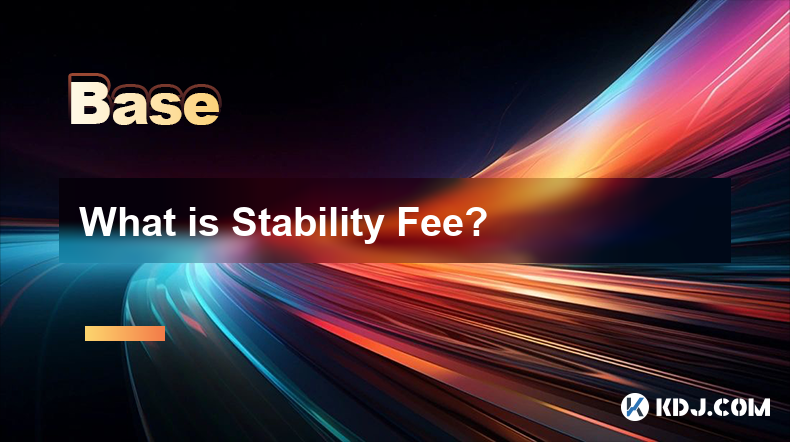
Key Points:
- Stability Fees are mechanisms used in decentralized finance (DeFi) protocols, primarily stablecoin systems, to maintain the peg of a stablecoin to its target asset (usually the US dollar).
- They incentivize users to return the stablecoin to its intended value, preventing excessive price deviations.
- The fee is typically charged when a stablecoin's price deviates from its peg, either above or below.
- Different protocols employ varying methods for calculating and applying stability fees, impacting their effectiveness and user experience.
- Understanding stability fees is crucial for anyone interacting with stablecoin-based DeFi protocols to avoid unexpected costs.
What is Stability Fee?
Stability fees are a crucial component of many decentralized finance (DeFi) protocols, particularly those involving algorithmic stablecoins. These fees act as a dynamic incentive mechanism designed to maintain the price stability of a stablecoin around its target value, usually $1. They're essentially a penalty for deviating from the peg, aiming to correct imbalances in the system. Think of them as a self-regulating mechanism within the stablecoin ecosystem.
How Do Stability Fees Work?
The exact mechanics of stability fees vary significantly between different stablecoin protocols. However, the underlying principle remains consistent: to discourage deviations from the peg and encourage users to bring the price back to its target. When the stablecoin's price moves away from its peg, a stability fee is applied. This fee is typically collected by the protocol itself or distributed amongst participants who help restore the price stability.
Examples of Stability Fee Implementation
Some protocols might implement a linear fee structure, where the fee increases proportionally to the deviation from the peg. Others may use a more complex formula that considers factors such as the magnitude and duration of the deviation. For instance, a protocol might charge a higher fee for a larger deviation or a longer period of instability. The specifics depend on the algorithmic design of each stablecoin system.
Calculating and Applying Stability Fees
The calculation of stability fees is often embedded within the smart contracts governing the stablecoin. These smart contracts automatically assess the current price of the stablecoin and calculate the applicable fee based on the predefined formula. The fee is then automatically deducted from the user's balance when they interact with the protocol, such as minting or burning stablecoins.
Stability Fees vs. Interest Rates
It's important to differentiate stability fees from interest rates. While both involve monetary charges, interest rates are typically associated with borrowing or lending activities, while stability fees are specifically designed to maintain price stability within a stablecoin system. They serve distinct purposes within the DeFi ecosystem.
Impact on Users
The impact of stability fees on users directly depends on the specific protocol and the prevailing market conditions. In times of market volatility, stability fees can become significant, adding an extra layer of cost to using the stablecoin. Understanding the fee structure before engaging with a particular stablecoin is crucial for managing risk and predicting potential expenses.
Mitigating Stability Fee Costs
Several strategies can help users mitigate stability fee costs. Staying informed about the price fluctuations of the stablecoin is crucial. If a significant deviation is anticipated, users might choose to temporarily withdraw their funds to avoid incurring substantial fees. Understanding the mechanics of the specific protocol's fee structure is essential for making informed decisions.
Different Types of Stability Fees
Some protocols utilize tiered stability fees, where the fee increases exponentially as the deviation from the peg becomes larger. This is intended to rapidly correct substantial price deviations and discourage excessive speculation. Other protocols may incorporate time-based fees, penalizing users for holding the stablecoin out of its peg for an extended period.
The Role of Oracles in Stability Fees
Oracles play a vital role in determining the price of the stablecoin and thus the calculation of stability fees. Accurate and reliable oracle data is critical for ensuring the fair and efficient operation of the stability fee mechanism. Any inaccuracies in oracle data can lead to miscalculations of the fees and potentially undermine the entire system's stability.
Transparency and Stability Fee Information
Transparency regarding stability fees is crucial for building trust and fostering user participation in DeFi protocols. Protocols should clearly disclose their stability fee structure, calculation methods, and the use of funds collected through these fees. This information should be readily accessible to users before they engage with the system.
Risks Associated with Stability Fees
While stability fees aim to maintain price stability, there are inherent risks. Complex fee structures might lead to unexpected costs for users. Manipulation of oracle data could lead to inaccurate fee calculations and potential exploitation of the system. Furthermore, excessively high stability fees can discourage participation and hinder the overall functionality of the stablecoin.
Future of Stability Fees in DeFi
The design and implementation of stability fees are continuously evolving. Research and development are ongoing to improve the efficiency and effectiveness of these mechanisms, aiming to reduce their impact on users while maintaining price stability. New and innovative approaches are likely to emerge in the future, shaping the landscape of stablecoin protocols.
Frequently Asked Questions:
Q: Are stability fees always charged?
A: No, stability fees are only charged when the stablecoin deviates from its target peg. If the stablecoin remains pegged to its target value, no stability fees are applied.
Q: Who receives the stability fees?
A: The destination of stability fees varies across different protocols. Some protocols might use them to buy back and burn stablecoins to reduce supply, others might distribute them to protocol participants as rewards, and some might accumulate them in a treasury.
Q: Can stability fees be avoided entirely?
A: While you can't entirely avoid the possibility of stability fees, you can mitigate the risk by closely monitoring the stablecoin's price and potentially withdrawing your assets when significant deviations from the peg are anticipated. Choosing stablecoins with simpler and more transparent fee structures can also help.
Q: What happens if a stablecoin's price deviates significantly and stability fees are insufficient?
A: This scenario highlights a critical vulnerability of some stablecoin systems. If the price deviation is severe and the stability fee mechanism fails to correct it, the stablecoin's peg could collapse, potentially resulting in significant financial losses for users.
Q: How do I find information about a specific stablecoin's stability fee structure?
A: The details of the stability fee structure are usually found in the protocol's documentation, whitepaper, or on its official website. You should always thoroughly research the specific stablecoin you intend to use before interacting with it.
Disclaimer:info@kdj.com
The information provided is not trading advice. kdj.com does not assume any responsibility for any investments made based on the information provided in this article. Cryptocurrencies are highly volatile and it is highly recommended that you invest with caution after thorough research!
If you believe that the content used on this website infringes your copyright, please contact us immediately (info@kdj.com) and we will delete it promptly.
- Kitten Craze Online: Hunting for the Purr-fect Coin Purse
- 2025-06-29 10:30:12
- Pudgy Penguins Soar to 3-Month High Amidst PENGU ETF Buzz!
- 2025-06-29 10:30:12
- AI Agents, Token Role, and Capitalization: Navigating the Web3 Frontier
- 2025-06-29 10:50:11
- Avalanche Price Forecast: Grayscale Boost Signals Potential Rally to $50?
- 2025-06-29 10:50:11
- Khazan's Getting a Facelift: Balance Changes and Freebies Galore!
- 2025-06-29 11:10:12
- Wall Street's Crypto Rival Battle: Saylor vs. Chanos and the Meme Coin Mania
- 2025-06-29 11:10:12
Related knowledge
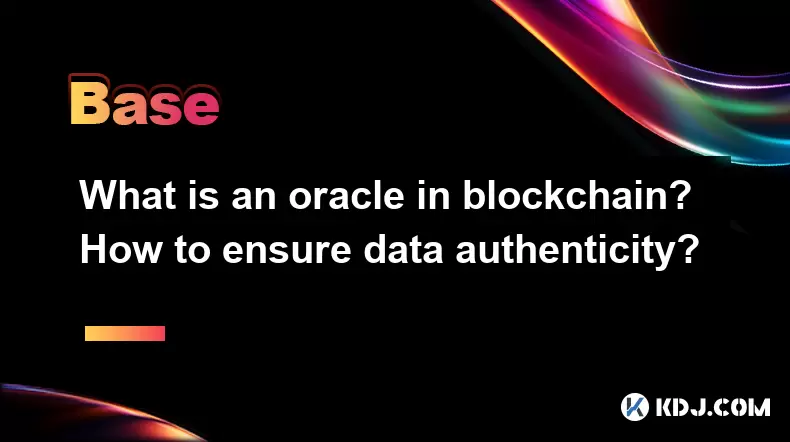
What is an oracle in blockchain? How to ensure data authenticity?
Jun 19,2025 at 08:49pm
Understanding the Role of an Oracle in BlockchainIn the context of blockchain technology, an oracle serves as a bridge between the blockchain and external data sources. While blockchains are inherently secure and decentralized, they cannot access real-world information on their own. Oracles enable smart contracts to interact with off-chain data such as ...
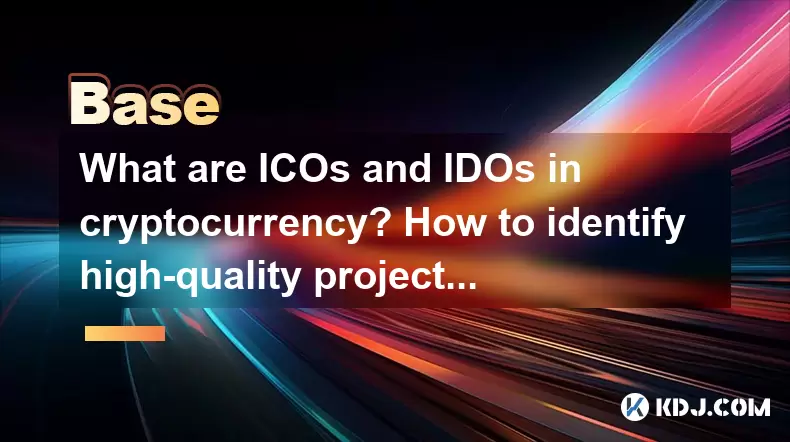
What are ICOs and IDOs in cryptocurrency? How to identify high-quality projects?
Jun 22,2025 at 11:49am
Understanding ICOs in CryptocurrencyInitial Coin Offerings (ICOs) are fundraising mechanisms used by cryptocurrency startups to raise capital for their projects. In an ICO, a company creates and sells its own tokens to investors in exchange for established cryptocurrencies like Bitcoin or Ethereum. The process typically involves the release of a whitepa...
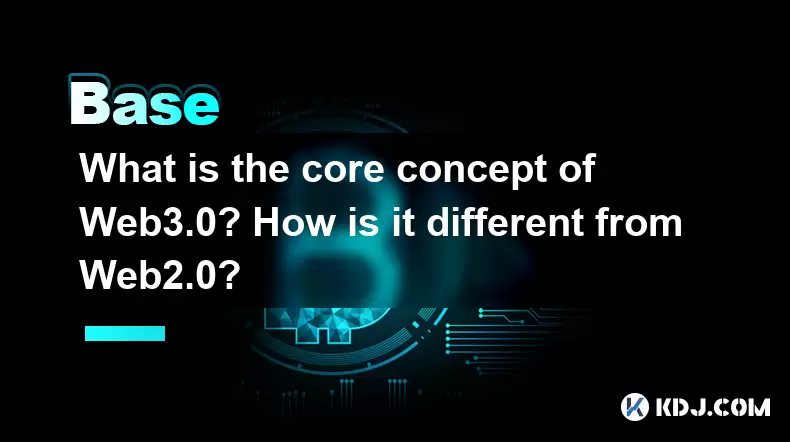
What is the core concept of Web3.0? How is it different from Web2.0?
Jun 21,2025 at 05:56pm
Decentralization as the Foundation of Web3.0The core concept of Web3.0 revolves around decentralization, which fundamentally challenges the centralized architecture of Web2.0. In Web3.0, control and ownership are distributed across a network rather than being held by a central authority or corporation. This is achieved primarily through blockchain techn...
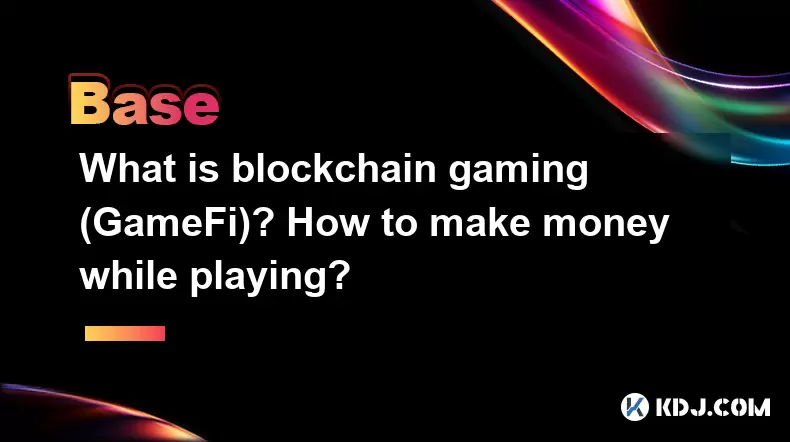
What is blockchain gaming (GameFi)? How to make money while playing?
Jun 20,2025 at 07:56am
Understanding Blockchain Gaming (GameFi)Blockchain gaming, often referred to as GameFi, is a fusion of blockchain technology and video games. It enables players to own in-game assets through non-fungible tokens (NFTs) and earn rewards via cryptocurrencies or token-based systems. Unlike traditional games where items are controlled by centralized develope...
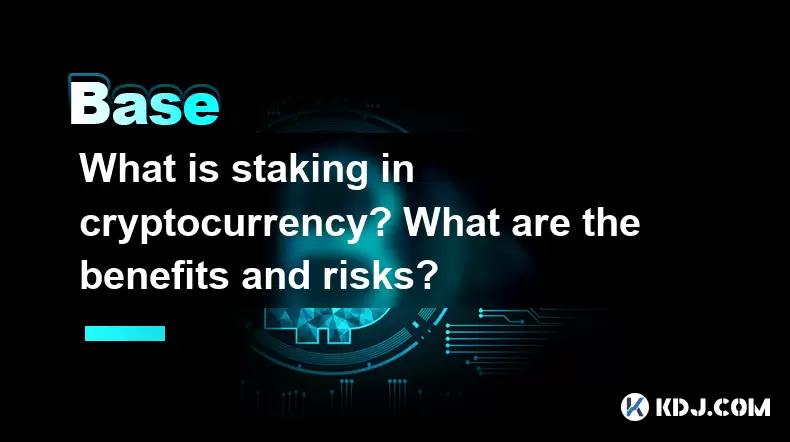
What is staking in cryptocurrency? What are the benefits and risks?
Jun 22,2025 at 10:01am
Understanding the Concept of Staking in CryptocurrencyStaking in cryptocurrency refers to the process of actively participating in transaction validation on a blockchain network that uses a Proof-of-Stake (PoS) consensus mechanism. Instead of miners competing to solve complex mathematical puzzles as in Proof-of-Work systems like Bitcoin, PoS blockchains...

How does the Lightning Network solve Bitcoin congestion? What is the usage process?
Jun 23,2025 at 06:21pm
Understanding Bitcoin Network CongestionBitcoin, as a decentralized digital currency, operates on a blockchain that records every transaction in a public ledger. Each block has a limited size, typically 1 megabyte, which allows for only a certain number of transactions per second (TPS). When the number of transactions increases, the network becomes cong...

What is an oracle in blockchain? How to ensure data authenticity?
Jun 19,2025 at 08:49pm
Understanding the Role of an Oracle in BlockchainIn the context of blockchain technology, an oracle serves as a bridge between the blockchain and external data sources. While blockchains are inherently secure and decentralized, they cannot access real-world information on their own. Oracles enable smart contracts to interact with off-chain data such as ...

What are ICOs and IDOs in cryptocurrency? How to identify high-quality projects?
Jun 22,2025 at 11:49am
Understanding ICOs in CryptocurrencyInitial Coin Offerings (ICOs) are fundraising mechanisms used by cryptocurrency startups to raise capital for their projects. In an ICO, a company creates and sells its own tokens to investors in exchange for established cryptocurrencies like Bitcoin or Ethereum. The process typically involves the release of a whitepa...

What is the core concept of Web3.0? How is it different from Web2.0?
Jun 21,2025 at 05:56pm
Decentralization as the Foundation of Web3.0The core concept of Web3.0 revolves around decentralization, which fundamentally challenges the centralized architecture of Web2.0. In Web3.0, control and ownership are distributed across a network rather than being held by a central authority or corporation. This is achieved primarily through blockchain techn...

What is blockchain gaming (GameFi)? How to make money while playing?
Jun 20,2025 at 07:56am
Understanding Blockchain Gaming (GameFi)Blockchain gaming, often referred to as GameFi, is a fusion of blockchain technology and video games. It enables players to own in-game assets through non-fungible tokens (NFTs) and earn rewards via cryptocurrencies or token-based systems. Unlike traditional games where items are controlled by centralized develope...

What is staking in cryptocurrency? What are the benefits and risks?
Jun 22,2025 at 10:01am
Understanding the Concept of Staking in CryptocurrencyStaking in cryptocurrency refers to the process of actively participating in transaction validation on a blockchain network that uses a Proof-of-Stake (PoS) consensus mechanism. Instead of miners competing to solve complex mathematical puzzles as in Proof-of-Work systems like Bitcoin, PoS blockchains...

How does the Lightning Network solve Bitcoin congestion? What is the usage process?
Jun 23,2025 at 06:21pm
Understanding Bitcoin Network CongestionBitcoin, as a decentralized digital currency, operates on a blockchain that records every transaction in a public ledger. Each block has a limited size, typically 1 megabyte, which allows for only a certain number of transactions per second (TPS). When the number of transactions increases, the network becomes cong...
See all articles

























































































